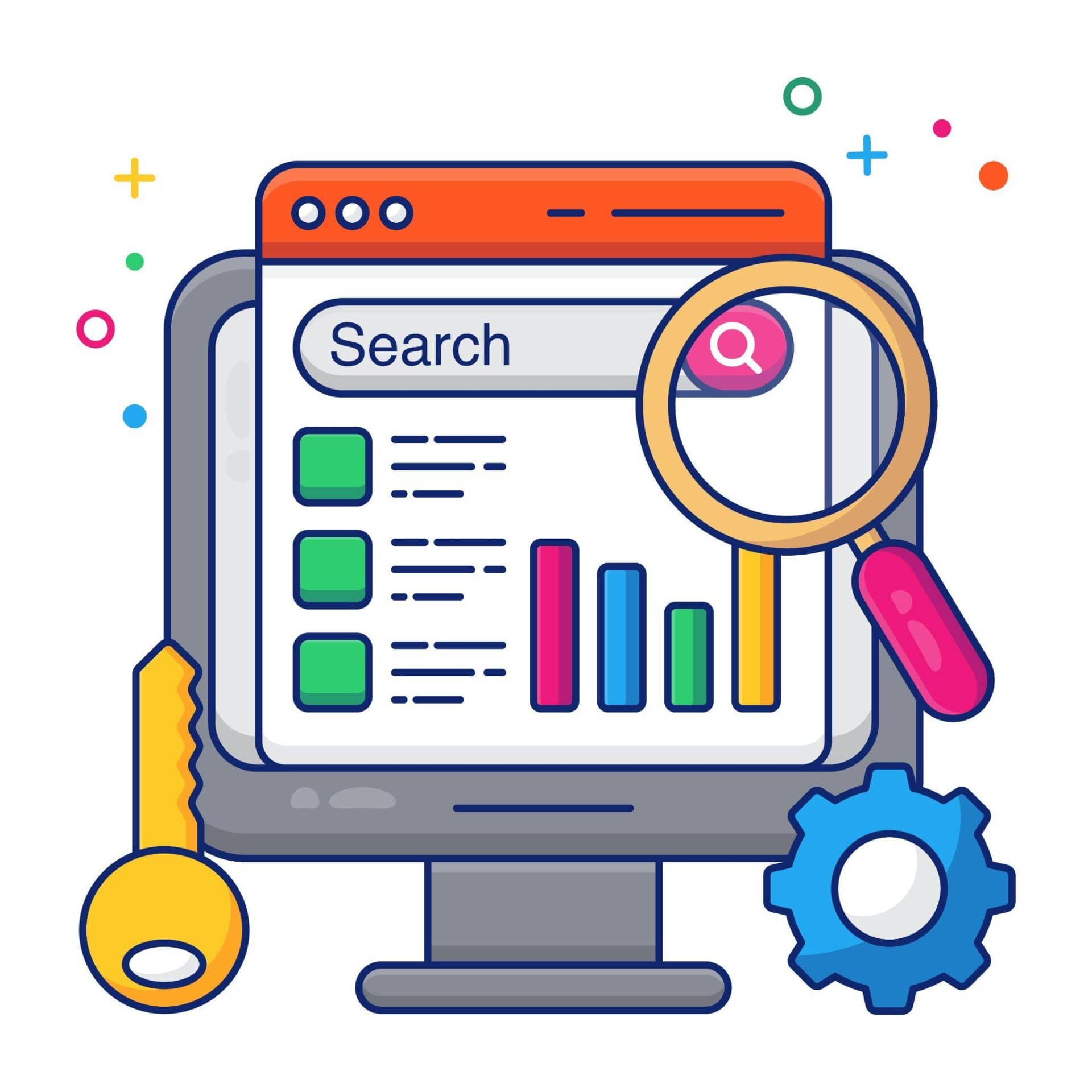The Untold Story of SEO Metrics: What Really Matters in 2024

- Save
Search engine optimization (SEO) metrics are essential to monitor if you want your website to perform well on search engine results pages (SERPs).
However, while there are ample metrics to keep an eye on as you continuously optimize your site, there are a few little-spoken-of ones that are crucial to your online success.
That’s exactly what we explore in this article. So, stick around to discover where your SEO game could use a boost.
SEO Metrics That Matter in 2024
With so many SEO metrics to keep an eye on, you may be overlooking a few critical ones that make a difference to your website’s rankings, traffic, and overall performance.
So, without further ado, here’s our list of metrics that you should be monitoring, apart from the “classics”, to ensure that your SEO game is strong.
SERP feature visibility
If you’re serious about ranking high on SERPs, you also know that appearing in various SERP features is essential. Known as the zero-position result, these features are also called “rich results”, which means your website content may appear in SERP features such as knowledge graphs and featured snippets, among other things. Holding this zero position is vital because it means your result has beat all the competitors to give your audience a clear and concise answer to their search query. The more featured snippets and other SERP feature results you have, the more likely you are to enjoy higher-click through rates to your site as your answer is deemed the most authoritative one out there. This is an essential boost to your site’s authority and your expertise. That’s why this metric is worth keeping an eye on.
Tools to use: One of the many online tools you can use to measure your performance in terms of rich results is SEMrush.
2. Branded SERP results
Often considered your business’ online business card, a branded SERP includes all the results that appear on a search engine when users search specifically for your brand name. This metric can go a couple of ways. Let’s start with the positive. If most of your branded search results are positive, you’re doing a good job with your SEO and customer experience. However, if your search results are negative and feature negative customer reviews, there’s a lot of work that remains to be done. On the other hand, if you have a mixture of positive and negative results, you have an opportunity to improve the situation by boosting your customers’ experience and offering quality products and/or services. Why is this metric important? In short, it reflects your brand’s online reputation and presence. The more positive results you have, the healthier brand perception you are putting out there.
Tools to use: This one is quite simple. Choose a search engine, enter your brand name in the keyword box, and then monitor the results that are displayed on the SERP.
3. Keyword cannibalization rate
What is keyword cannibalization? This is an SEO mistake that shouldn’t be made but is frequently encountered. It happens when two or more pages on your website target the same keyword or topic, leading to higher “internal competition” and less optimized content structure. Why is this important? Because search engines struggle to determine which page to actually rank for the specific keyword. Ultimately, this can result in poor rankings.
Tools to use: SEMrush’s cannibalization report is a powerful tool to use to measure any keyword cannibalization on your site.
4. Topical authority
Want to be a go-to authority on a particular topic? Then you need to work on your topical authority metric. It is very closely aligned with Google’s E-E-A-T (Expertise, Experience, Authoritativeness, Trustworthiness) guidelines. Essentially, you want to be covering your topic both widely and deeply so that you emerge victorious in the online competition for higher rankings on SERPs.
Tools to use: A tool such as Moz can help you determine the diversity of linking domains for different topics.
5. Crawl budget utilization

- Save
You know that if you want to achieve high rankings on search engines like Google, your web pages need to be crawled by Googlebot. With this in mind, you need to be aware of your crawl budget. What is this? It’s basically how many pages the bot crawls and indexes on a site within a given time frame. Your crawl budget is an essential metric that reflects how efficiently search engines crawl your site. An optimized crawl budget means your critical pages are crawled quickly, while an unoptimized crawl budget reflects the opposite.
One effective way to optimize your crawl budget is by enhancing your website’s speed and performance. Utilizing tools such as the LiteSpeed cache plugin can significantly improve your website’s loading times, thereby ensuring that search engine bots can crawl more pages within the allocated budget. By reducing the time it takes for your pages to load, you can maximize the efficiency of search engine crawling and indexing, ultimately leading to better visibility and rankings on SERPs.
Tools to use: Monitoring crawl activity can be achieved through Google’s Search Console.
6. Linkless mentions
A brand or product mentioned online without a link is not worthless in SEO. That’s because search engines are getting more intelligent in how people are using the internet and searching for information. Despite the fact that they do not come with a link, your brand is still getting exposure and raising awareness. This, in turn, influences your website’s authority and trust.
Tools to use: A tool such as BrandMentions can help you better identify instances when your brand is mentioned without a hyperlink.
7. Keyword gap
When looking at this metric, you are essentially doing a side-by-side comparison of the number of keywords your site is ranking for with your competitors. The keyword gap is where you are missing opportunities that your competitors are taking advantage of. As such, studying your keyword gap can help you with strategic content planning and optimized keyword utilization.
Conducting a comprehensive competitor analysis is essential to fully leverage the insights gained from assessing your keyword gap. By analyzing your competitors’ keyword strategies and identifying the keywords they are ranking for but you are not, you can uncover valuable opportunities to enhance your own content and SEO efforts. Understanding what keywords your competitors are targeting can inform your content creation, optimization, and link-building strategies, ultimately helping you gain a competitive edge in the search rankings.
Tools to use: SEMrush can be used to compare your keyword rankings with competitors.
8. Mobile-first indexing readiness

- Save
Mobile device users worldwide equal 52.66%, compared to 45.56% of desktop users. So, with most online users using their smartphones to carry out searches online, this metric looks at mobile-first indexing that ensures your site is optimized for mobile users. In addition to this, it’s worth remembering that Google switched to mobile-first indexing for all websites in September 2020, meaning that they are looking to cater to the majority of users who browse online through their mobile devices.
Tools to use: Google’s Mobile-Friendly Test will help you assess if your site is compatible with mobile.
9. Backlinks and internal links
Backlinks are links that you get from other sites linking to your content. Internal links are links to other pages on your site. Both carry significant weight because the link equity or “link juice” they create makes your site more authoritative and is likely to help you rank higher in the SERPs. Monitoring your link profile regularly is a must for any SEO. The opposite means that some of your web pages may not get crawled and indexed and this could lead to not even ranking on search engines like Google.
Tools to use: An example of a tool you can use is the Linkody Backlinks Report or you can use a backlinks API to generate unique reports for your websites:
Conclusion
While there may be many “classic” SEO metrics you can track and monitor, the picture is changing in 2024.
This means you need to ensure that your site is as competitive as possible through analyzing both the classic and the less frequently analyzed SEO metrics out there.
This list of metrics will help you rank higher by identifying gaps where your content could improve, be this through more authoritative backlinks, a better internal linking structure, a mobile-friendly website, or keyword gaps and brand mentions.